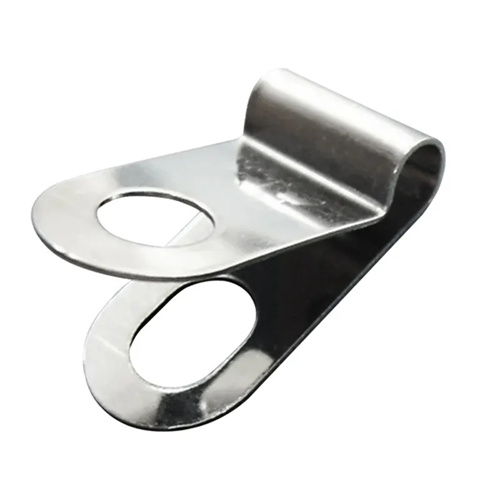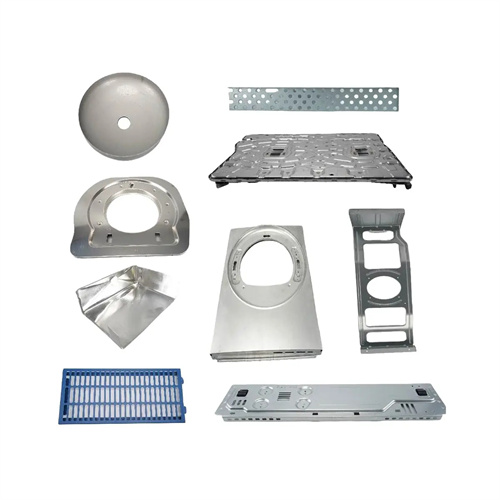Bending force, ejection force and pressing force
Bending force, ejector force, and press force are three key force parameters in the bending process. These three factors work together to influence the forming quality and production efficiency of the bent part. Bending force is the primary driver of plastic deformation in the material, ejector force is used to eject the workpiece from the die and assist in forming, and press force prevents slippage and wrinkling during the bending process. Properly matching the magnitude and timing of these three forces ensures a stable bending process, improves product precision, and extends mold life.

Bending force is the core of the three. It is divided into free bending force and corrective bending force, and its magnitude depends on material properties, part size, and bending method. Free bending force is suitable for simple bends, while corrective bending force is used for high-precision parts. It is typically 3-5 times the free bending force. The bending force calculation must be based on the material’s tensile strength or yield strength, taking into account the part’s width, thickness, and bend radius. For example, the free bending force of a mild steel V-shaped part (B=50mm, t=2mm, r=3mm) is approximately 12kN, while the corrective bending force requires 36-60kN. The bending force acts in the same direction as the punch’s movement, directly causing the material to bend. Its magnitude must be commensurate with the press’s tonnage to avoid overloading the equipment.

The main function of the ejector force is to support the workpiece during the bending process, ensuring that the workpiece fits tightly against the punch, and to eject the workpiece from the die after bending to prevent it from being retained. The ejector force is usually 5%-20% of the bending force, and the specific value needs to be determined based on the workpiece weight, shape, and material friction coefficient. For small bent parts, the ejector force can be provided by springs or rubber; for large parts, pneumatic or hydraulic cylinders are required, and the ejector force can reach several tons. For example, for a U-shaped part with a bending force of 100kN, the ejector force can be 5-20kN. If the workpiece surface is rough or the shape is complex, a larger value of the ejector force is required. Insufficient ejector force will result in poor fit between the workpiece and the punch, resulting in dimensional errors; excessive ejector force will increase the mold load and aggravate die wear.

The pressing force is used to hold the workpiece in place during the bending process, preventing slippage or wrinkling under the action of the punch. This is particularly important for asymmetrically bent parts and thin parts. The pressing force is typically 10%-30% of the bending force and is calculated using the formula F press = K press × F bend (K press is the pressing factor). For example, for a part with an 80kN bending force, the pressing force can be 8-24kN. The pressing force must be evenly distributed, achieved through full contact between the press plate and the workpiece. For irregularly shaped parts, the press plate should be contoured. Too little pressing force can result in inaccurate workpiece positioning and dimensional deviations after bending. Too much pressure increases the risk of surface scratches and increases the bending force.

The coordinated action of the bending force, the ejector force, and the pressing force must be achieved through mold structural design. The timing of their action must be coordinated: at the beginning of bending, the pressing force acts first, compressing the workpiece. During bending, the bending force gradually increases, while the ejector force simultaneously acts to support the workpiece. At the end of bending, the bending force is released, and the ejector force ejects the workpiece, simultaneously releasing the pressing force. For example, in an automated bending production line, a PLC control system coordinates the order and magnitude of the three forces to ensure a smooth bending process. Force adjustment mechanisms must be incorporated into the mold design. For example, the ejector force can be adjusted by adjusting spring compression or hydraulic pressure, while the pressing force can be adjusted by adjusting bolts or a wedge mechanism.

In actual production, the magnitudes of the three forces must be determined through mold trial optimization, using theoretically calculated values as an initial reference. During mold trials, the workpiece’s forming quality, surface condition, and dimensional accuracy are observed, and the forces are gradually adjusted. For example, if wrinkles are observed during a bending test, the pressing force needs to be increased; if the workpiece’s bending angle is out of tolerance, the bending force or ejection force needs to be adjusted; if indentations are found on the workpiece surface, the pressing force or ejection force needs to be reduced. For mass-produced parts, the stability of the three forces must be regularly checked to prevent fluctuations in force due to mold wear or changes in equipment parameters, which could affect product quality.

In specialized bending processes, the matching of the three forces requires special handling: in stretch bending, the bending force and axial tension work together, and the ejection and pressing forces need to be reduced accordingly. In warm bending, the material’s plasticity increases, the bending force decreases, and the ejection and pressing forces can be reduced proportionally. With the application of intelligent technology, sensors can monitor the magnitude of the three forces in real time. Combined with AI algorithms for dynamic adjustment, adaptive control can be achieved, further improving the quality and stability of bent parts. For example, an automotive parts manufacturer uses an intelligent bending system to monitor and adjust the ratio of the three forces in real time, increasing its product qualification rate from 92% to 99%. <|FCResponseEnd|>